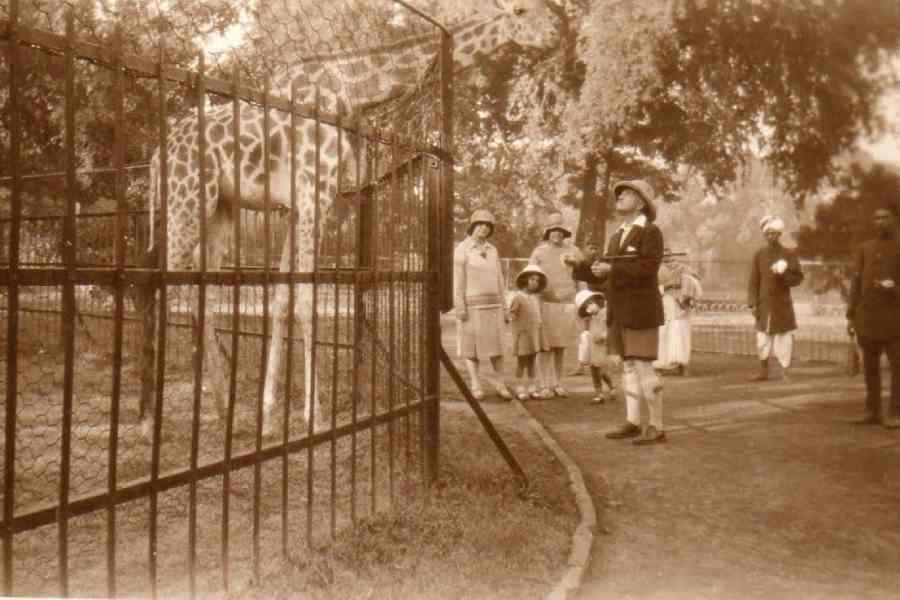I have so many wonderful childhood memories of visiting the Alipore zoo that recently turned 150 years. Every few weeks, through the late 1950s and the 1960s, my dad would load all of us five kids and any friends who could pile into his battered Landmaster car to visit the zoo. Armed with newspaper bags full of peanuts and channa, we would excitedly feed the animals, watch them bathe, and look forward to the elephants salaaming us. In those days, we had elephant rides too. The grand finale of our visit was tucking into the bright pink candyfloss that my dad bought for all of us. From the late 19th to the mid-20th century, going to the zoo was a regular outing for Jewish families, especially those from the middle class and the poorer segments.
The Alipore zoo, established in 1875, is India’s oldest formally designated zoological park. In the next few years, 10 Jews became patrons, foremost among whom was Elia D.J. Ezra, who held many important civic posts, including the sheriff of Calcutta. In the 1880s, he contributed the Ezra House, an enclosure for giraffes and other large animals, to the zoo at a cost of Rs 12,000. He also gave many large animals, including a pair of gazelles and varied bird species, many of which were imported. He also donated Rs 13,000 for a bandstand.
Elias Gubbay, another Jewish philanthropist, contributed Rs 8,000 towards improving and expanding the zoo. Elia Ezra urged him to finance the Gubbay House, a building for birds and reptiles. Both the Ezra House and the Gubbay House stand today as a testimony to these two Jewish philanthropists.
David Sassoon, a Baghdadi Jewish tycoon in Bombay, played a key role in the development of the zoo there. In 1861, he handed over his private zoo to the government which is the genesis of the current zoo, the Veer Jijamata Udyaan in Byculla. A 75-foot clock tower, a gift from Sassoon, completed in 1865, stands at the zoo’s entrance. This Palladian-style tower structure has a wrought iron staircase and a balcony on four sides. It was shifted, brick by brick, in 1926 to widen the road.
While the Baghdadi Jews were patrons of the zoos in Calcutta and Bombay, Reuben David, a Bene-Israeli Jew, played a pivotal role in the formation of the Kamla Nehru Zoological Garden in Ahmedabad. The Ahmedabad Municipal Corporation invited him to create the zoo in 1951. His daughter, the renowned writer, Esther David, has written lovingly about her father and his love for and way with animals. Esther fondly recalls how, at the age of 14, he took her into the cage of a lion and even left her there alone with the animal for a while. He often said that “the two-legged are more dangerous than the four-legged!”
The Ezra family of Calcutta had a private zoo on the sprawling grounds of their mansion on 3, Kydd Street. The animals there included zebras, monkeys, deer, leopards, bears and a very large and ancient tortoise that was a never-ending source of pleasure for visitors who rode upon its sturdy back. Perhaps the tortoise at the Ezra private zoo was inspired by the famed Aldabra giant tortoise, one of the best-known creatures at the Alipore zoo, which was said to have been over 250 years old when it died in 2006.
Lady Ezra, who is from the illustrious Sassoon family, donated the collection of animals to the Tel Aviv Zoo on the demise of her husband in 1947. Her gift to the Tel Aviv Zoo must have been deeply appreciated as the zoo was founded a few years earlier (1938) in central Tel Aviv. The zoo closed in 1980; the animals were relocated to the zoological centre of Tel Aviv-Ramat Gan.
Colonial concepts and discourses of the domination of animals, the advancement of science, and the contested relationships between spectacle and the treatment of species shaped these zoos. These institutions may remain rooted in the past. But they are enormously popular attractions.
Jael Silliman is an author











